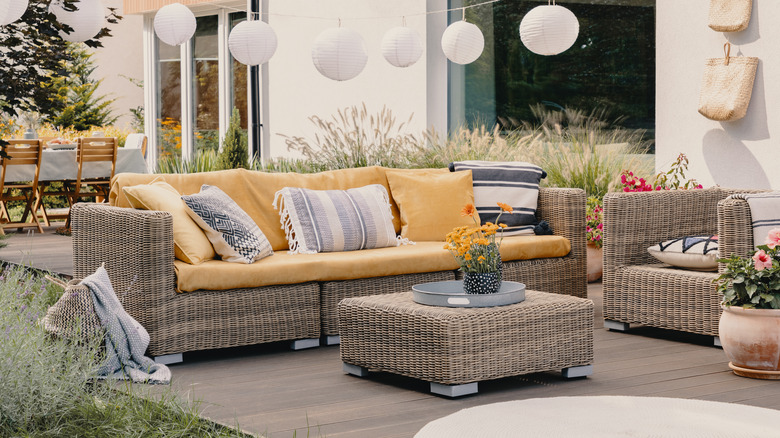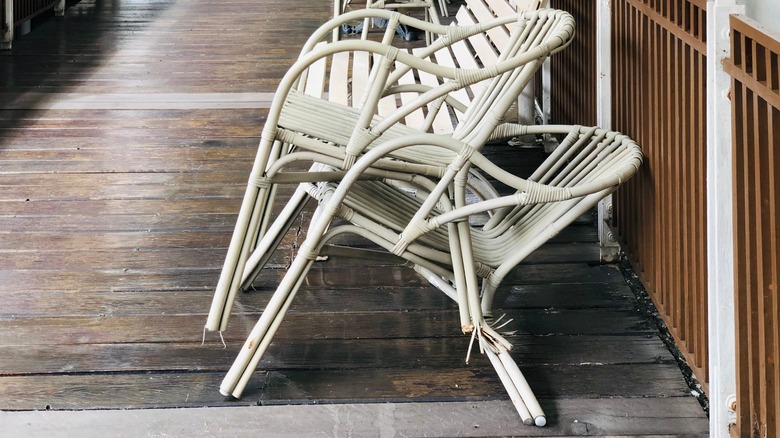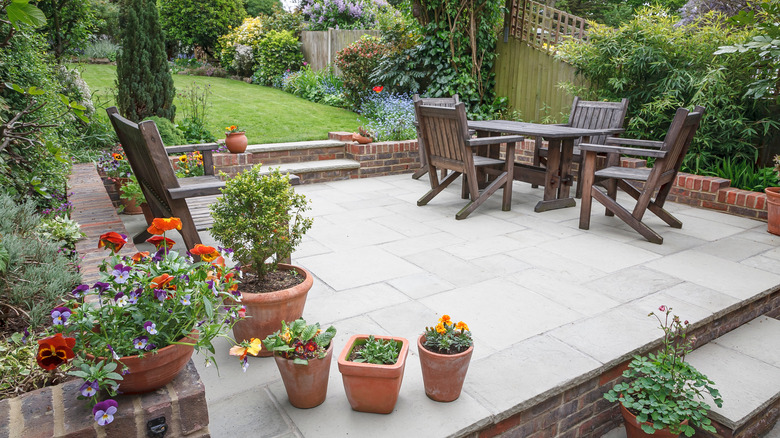Here's Why You Shouldn't Place Outdoor Wood Furniture Directly On Grass
While the lush green grass may seem like a perfect and inviting spot for your wooden patio furniture, it's generally not recommended. That's because the moisture can wreak havoc on your outdoor seating, leading to its quick demise. Setting your patio furniture directly on grass can also damage the grass itself due to pressure, insufficient water, and lack of sunlight. Certain types of wooden furniture are also a haven for tiny insect invaders that will treat your outdoor loveseat as a place of refuge and worse.
Fortunately, there are ways to work around this particular issue. One simple and effective solution is to create a barrier between the grass and the furniture itself. This barrier not only protects the furniture from moisture but also ensures proper air circulation. Additionally, incorporating bug-repellent measures can help keep critters at bay and create a less inviting environment for insects, preventing possible infestations and minimizing the likelihood of damage to the wooden furniture.
Moisture, mildew, staining, and bugs
One of the primary concerns when placing furniture on grass is the issue of moisture — grass and soil retain water, like a giant earth sponge. If you're the proud owner of rattan or other wooden patio furniture, know that when it comes into direct contact with the damp ground, it absorbs the moisture, leading to potential problems like rot, mold, and mildew. The excess moisture will gradually eat away and destroy your seating, which compromises its structural integrity and shortens its lifespan.
Another disadvantage of placing wood furniture on grass is the increased risk of attracting insects and pests. While we don't pay much attention to it, the grass is its own ecosystem and can be home to an assortment of creepy crawlies that also see your wooden patio furniture as a tasty delicacy. The soil beneath the grass is often home to various pests which can and will wreak havoc on wooden structures. By elevating the furniture off the ground, you reduce the chances of pests infesting the wood and causing significant damage. Grass also contains compounds that can cause staining, particularly on lighter-colored or untreated wood furniture. It can be incredibly difficult to remove the stains and can lead to permanent discoloration.
Take preventative measures
If you want your outdoor wood furniture to last and perform its best, it's a good idea to give it a solid and stable foundation. Instead of just plopping your garden furniture on the grass, you can create a patio or deck area as a designated space for your outdoor furniture. These spots offer stability and protection from ground moisture. If you don't have a patio or deck space, you can also use flagstones or concrete stepping stones.
If you want to take it a step further, try putting a suitable outdoor rug or weather-resistant mat underneath your furniture. This not only adds an extra layer of protection, but it minimizes moisture exposure and absorption. Spray down furniture with all-natural bug repellant, use candles or electric bug lights, and always cover your furniture when not in use. This not only protects it from the elements, but it can stave off any potential invaders — unless your patio seating is made with insect-resistant wood or has been treated with bug-repellant, it won't be immune to wood-boring insects.


